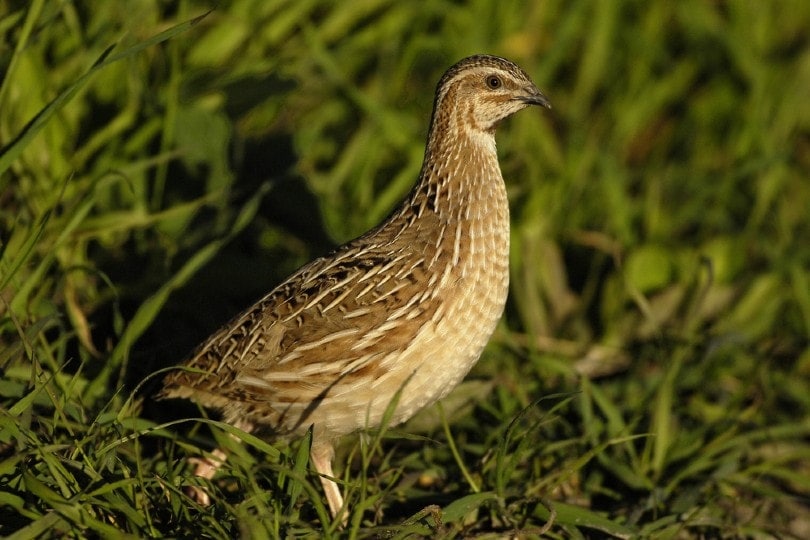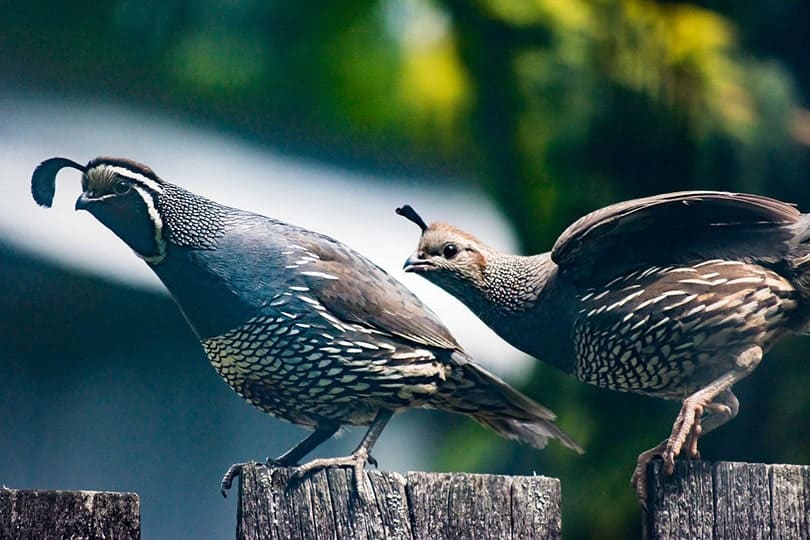Quail are small game birds that are smart, easy to raise, and fun to watch. These birds are usually hunted for meat, but homesteaders like to raise them for both meat and eggs. They require less space than most other backyard poultry. Some types of quail are kept as pets by aviary hobbyists who admire the birds’ bright colors and patterns. Selective breeding in captivity has enabled people to create an even wider variety of quail colors.
These birds are unique in many ways, and one is that they’re commonly seen on the ground. Even when approached, quail tend to run away quickly instead of flying. They can reach running speeds of over 15 miles per hour (mph). This makes people think that quail cannot fly.
But quail can indeed fly! They just don’t like to. When possible, they prefer to run. They fly only when they feel that it is necessary, reaching speeds of up to 40 mph.

Why Do Quail Dislike Flying?
Quail are gallinaceous birds, which are ground-feeding domestic or game birds including chickens, turkeys, grouse, and partridges. These birds have wings, but they aren’t winning any awards for their flying abilities. Quail are efficient runners and prefer to stick to the ground and run when they have to. If they must fly, they can only travel about 100 yards at a time. Their wings are strong enough to fly for longer periods, but their bodies can’t sustain longer distances.

When Do Quail Begin to Fly?
About a day after they hatch, young quail leave the nest. They remain cared for and protected by both parents. Around 10 days old, they can start to fly for short distances. Quail chicks are active, finding food on their own and following their parents around. Quail families usually travel in a single-file line.

How to Keep Quail From Flying
It’s important to have a roof on quail enclosures. Even though these birds rarely fly, they can do so and will escape if given the chance. They need less space than most other poultry, but their coops must be secure. If they do fly in their coops, they shouldn’t be able to escape.
Another way to keep quail from flying is to clip their wings. This involves gently trimming off the flight feathers on one wing. Even if they try to take flight, they won’t be able to. They will be off-balance and won’t get far off the ground. These feathers grow back, though. Clipping their wings once won’t be enough to keep them grounded forever. Once the trimmed feathers fall out after the birds molt, the new, fully formed feathers will grow back in. When these reach their maximum length, the quail can fly again.


Dangers On the Ground
Since quail spend most of their time on the ground, they are at greater risk for predators. These include other birds, coyotes, snakes, and cats. If the quail try to run to get away, these other animals can catch them. If they try to fly away, they’re still at risk of being captured quickly because of their poor flight skills.
Domestic quail should be kept in enclosures that not only keep them in but also keep other animals out. Chicken wire, mesh, and other fencing should be used to ensure that your quail stay safe, contained, and unharmed.

Do Quail Migrate?
Most quail do not migrate, but there is an exception to this. European quail use their powerful wings to migrate from Northern Europe to sub-Saharan Africa each winter. This is a dangerous trip for them. They are vulnerable to hunters who know when the birds will be flying overhead. Other dangers are injuries, fatigue, and predators.

Final Thoughts
Even though they are primarily ground-dwelling birds, quail can fly. They prefer to walk and run on the ground to escape danger, but they will fly if necessary. In the air, they can reach speeds of up to 40 mph.
If you keep quail, it’s important to make sure their enclosures are secure and will keep out predators. There should always be a roof, even if your quail like to stay on the ground. Since they can fly, they may be able to escape if they aren’t entirely contained.
Featured Image Credit By: TA Gallup, Pixabay
